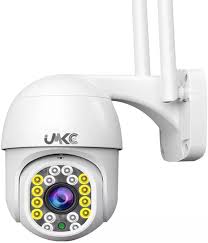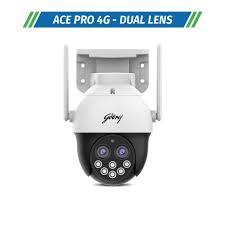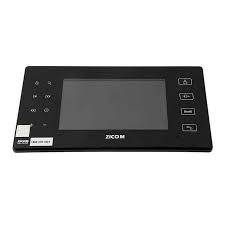Home Surveillance Cameras: Enhancing Security with Wireless Technology
Home surveillance cameras have become an essential tool for homeowners looking to enhance the security of their properties. With advancements in technology, wireless home surveillance cameras have gained popularity due to their convenience, flexibility, and ease of installation.
Wireless home surveillance cameras offer several benefits that make them a preferred choice for modern homeowners. One of the primary advantages is the flexibility in camera placement. Unlike traditional wired cameras that require cables and professional installation, wireless cameras can be easily installed in various locations without the need for complex wiring.
Another key benefit of wireless home surveillance cameras is remote monitoring. With a wireless camera system connected to your home network, you can access live footage and recordings from anywhere using a smartphone, tablet, or computer. This provides homeowners with peace of mind knowing they can keep an eye on their property even when they are away.
In addition to remote monitoring, many wireless home surveillance cameras offer motion detection and alerts. These features notify homeowners of any suspicious activity detected by the camera, allowing for immediate action to be taken if necessary. Some advanced models even come with two-way audio capabilities, enabling communication with individuals near the camera.
When choosing a wireless home surveillance camera system, it is essential to consider factors such as video quality, night vision capabilities, storage options (cloud or local), and compatibility with other smart home devices. Additionally, ensuring proper placement of cameras to cover critical areas around your property will maximize the effectiveness of your surveillance system.
In conclusion, wireless home surveillance cameras provide an effective and convenient solution for enhancing security and monitoring your property. With easy installation, remote access features, and advanced functionalities, these cameras offer peace of mind and protection for homeowners seeking to safeguard their homes against potential threats.
Top 7 Advantages of Wireless Home Surveillance Cameras for Enhanced Security and Convenience
- Easy installation without the need for complex wiring
- Flexibility in camera placement for optimal coverage
- Remote monitoring capability from anywhere using a smartphone or computer
- Motion detection and alerts for immediate notification of suspicious activity
- Enhanced security with night vision capabilities for round-the-clock surveillance
- Two-way audio communication feature for interaction with individuals near the camera
- Compatibility with other smart home devices for seamless integration
6 Drawbacks of Wireless Home Surveillance Cameras
- Dependence on Wi-Fi connection
- Limited range
- Potential signal interference
- Power source dependency
- Security vulnerabilities
- Higher cost
Easy installation without the need for complex wiring
One significant advantage of wireless home surveillance cameras is their easy installation process, eliminating the need for complex wiring. Homeowners can conveniently set up these cameras in various locations without the hassle of running cables through walls or ceilings. This not only saves time and effort but also allows for greater flexibility in choosing optimal camera placements to ensure comprehensive coverage of the property. The simplicity of installation makes wireless home surveillance cameras a user-friendly security solution for homeowners looking to enhance the safety and protection of their homes with minimal setup requirements.
Flexibility in camera placement for optimal coverage
Wireless home surveillance cameras offer unparalleled flexibility in camera placement, allowing homeowners to achieve optimal coverage of their property. Unlike traditional wired cameras that are limited by cable length and placement restrictions, wireless cameras can be easily installed in various locations without the need for complex wiring. This flexibility enables homeowners to strategically position cameras to cover key areas of their property, ensuring comprehensive surveillance and maximum security coverage. Whether it’s monitoring entry points, outdoor spaces, or interior rooms, the ability to place wireless cameras wherever needed enhances the effectiveness of a home surveillance system and provides peace of mind knowing that every corner of the property is under watchful eyes.
Remote monitoring capability from anywhere using a smartphone or computer
The remote monitoring capability of wireless home surveillance cameras offers homeowners the convenience and peace of mind of accessing live footage and recordings from anywhere using a smartphone or computer. This feature allows individuals to keep a watchful eye on their property even when they are away, ensuring that they stay informed about any activity in and around their home. Whether at work, on vacation, or simply away from home, the ability to remotely monitor the camera feed provides a sense of security and control over one’s living space.
Motion detection and alerts for immediate notification of suspicious activity
One of the key advantages of wireless home surveillance cameras is their motion detection and alert feature, which provides immediate notification of any suspicious activity detected by the camera. This proactive functionality ensures that homeowners are promptly informed of potential security threats, allowing them to take swift action to address the situation. By receiving real-time alerts on their smartphones or other devices, homeowners can stay vigilant and responsive to any unauthorized movements around their property, enhancing overall security and peace of mind.
Enhanced security with night vision capabilities for round-the-clock surveillance
Enhanced security with night vision capabilities for round-the-clock surveillance is a significant advantage of wireless home surveillance cameras. With the ability to capture clear footage in low-light or complete darkness, these cameras ensure that your property remains protected 24/7. Night vision technology allows homeowners to monitor their surroundings effectively during nighttime hours, providing an added layer of security and peace of mind. Whether it’s keeping an eye on the perimeter of your property or monitoring indoor spaces at night, wireless cameras with night vision capabilities offer continuous surveillance to deter potential threats and ensure the safety of your home and loved ones.
Two-way audio communication feature for interaction with individuals near the camera
The two-way audio communication feature of wireless home surveillance cameras allows homeowners to interact with individuals near the camera in real-time. This functionality enables users to not only monitor activities but also communicate with visitors, delivery personnel, or potential intruders. The ability to have a conversation through the camera adds an extra layer of security and convenience, providing homeowners with the means to deter unwanted behavior or provide instructions when necessary.
Compatibility with other smart home devices for seamless integration
Wireless home surveillance cameras offer the significant advantage of compatibility with other smart home devices, allowing for seamless integration and enhanced functionality. By connecting wireless cameras to a smart home ecosystem, homeowners can create a comprehensive security network that works together to provide maximum protection. Integration with devices such as smart lights, door locks, and motion sensors enables automated responses based on camera activity, enhancing overall security and convenience. This compatibility ensures that homeowners can easily manage and monitor their home surveillance system alongside other smart devices from a centralized platform, promoting a more connected and efficient living environment.
Dependence on Wi-Fi connection
Dependence on Wi-Fi connection is a significant con of wireless home surveillance cameras. The reliability and effectiveness of these cameras are directly linked to the stability of the Wi-Fi connection. Unfortunately, Wi-Fi signals can be susceptible to interruptions or interference from various sources, such as electronic devices, physical obstructions, or network congestion. This dependency on Wi-Fi connectivity can potentially compromise the continuous monitoring and recording capabilities of wireless home surveillance cameras, leading to gaps in surveillance coverage and potential security vulnerabilities. It is essential for homeowners considering wireless camera systems to ensure a robust and stable Wi-Fi network to minimize the risk of disruptions in their home security monitoring.
Limited range
One significant drawback of wireless home surveillance cameras is their limited transmission range, which can impact the coverage of larger properties. Unlike wired systems that can extend their reach with additional cables, wireless cameras may struggle to maintain a stable connection over long distances. This limitation can result in blind spots or areas with poor signal reception, compromising the overall effectiveness of the surveillance system in monitoring extensive or sprawling properties.
Potential signal interference
Potential signal interference is a significant drawback of wireless home surveillance cameras. The wireless signal used by these cameras can be susceptible to interference from other electronic devices operating on similar frequencies, such as Wi-Fi routers or cordless phones. Additionally, physical obstacles like walls or metal structures can weaken the wireless signal, causing connectivity issues and potentially disrupting the camera’s ability to transmit live footage effectively. This interference can result in gaps in surveillance coverage and compromise the overall effectiveness of the home security system.
Power source dependency
One significant drawback of wireless home surveillance cameras is their dependency on a reliable power source. Whether powered by batteries or electrical outlets, these cameras require consistent energy to function effectively. This reliance on power sources can lead to issues such as battery drain or power outages, requiring frequent monitoring and maintenance to ensure uninterrupted operation. Homeowners must be vigilant in checking the power status of their wireless cameras to prevent gaps in surveillance coverage due to power-related issues.
Security vulnerabilities
Security vulnerabilities are a significant con associated with wireless home surveillance cameras. Without proper security measures such as strong passwords and encryption, these systems may be vulnerable to hacking or unauthorized access. Hackers could potentially gain access to live footage, recordings, or even control of the cameras, posing a serious threat to the privacy and security of homeowners. It is crucial for users to take proactive steps to secure their wireless camera systems and ensure that they are protected against potential cyber threats and breaches.
Higher cost
In general, one of the drawbacks of wireless home surveillance cameras is their higher cost compared to wired systems. The advanced technology and features that come with wireless cameras contribute to their elevated upfront price tag. While the convenience and flexibility of wireless cameras are appealing, the initial investment required may be a deterrent for some homeowners looking to enhance their home security system within a budget. It is important for consumers to weigh the benefits against the higher cost when considering whether wireless home surveillance cameras are the right choice for their security needs.




